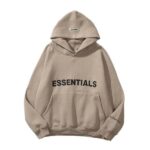Indoor and container gardening is more than a hobby—it’s a lifestyle that brings nature into living spaces, improves air quality, and promotes emotional wellness. However, thriving plants don’t start with light or water. Their health begins at the root level—with what you plant them in. Choosing the best potting mix for plants is one of the most critical decisions a gardener can make, especially for indoor varieties.
This guide walks you through every aspect of potting media, from the science behind soil-free blends to choosing the ideal indoor plant potting mix for long-term success. Whether you’re growing herbs on a windowsill or managing decorative foliage, this article covers all you need to know.
Why Regular Garden Soil Doesn’t Work in Containers
Garden soil might support outdoor beds, but it’s unsuitable for potted environments. It’s too dense, often contains weed seeds, and doesn’t drain well in confined spaces. Plants in pots need more than dirt—they need a custom-blended environment that promotes strong roots, prevents disease, and holds nutrients.
A specialized indoor plant potting mix is engineered to solve these challenges. It’s designed to be light, clean, and capable of supporting growth without turning soggy or attracting pests.
Understanding the Structure of Potting Mix
A potting mix is not “soil” in the traditional sense. It’s a growing medium—a blend of multiple materials, each serving a unique purpose in supporting plant health. The key to an effective mix lies in its structure, which must strike the right balance between water retention, oxygen supply, and nutrient storage.
Common ingredients in top-grade mixes include:
- Coco peat: Holds water while staying airy.
- Perlite: A volcanic mineral that boosts drainage.
- Vermiculite: Helps retain essential minerals and moisture.
- Composted organics: Feed roots gradually over time.
- Sterile base: Eliminates the risk of soil-borne pathogens.
The best potting mix for plants will include some or all of these materials, depending on the needs of specific plant varieties.
Characteristics of an Ideal Indoor Mix
When choosing a potting medium for indoor gardening, you need to consider more than just water retention. Indoor environments introduce unique challenges like limited sunlight, poor airflow, and stable temperatures that can trap moisture. A proper indoor plant potting mix should offer:
- Low weight: Heavier mixes stress plant stems and trap moisture.
- Sterility: No risk of fungal spores, pests, or weed seeds.
- Neutral pH: Suitable for a wide range of houseplants.
- Controlled moisture balance: Avoids root rot and fungus gnats.
- Air pockets: Ensure oxygen reaches the root zone efficiently.
Such mixes are tailored to support long-lasting indoor greenery, especially for people who want low-maintenance plant care.
How Soilrite-C Solves Common Gardening Problems
Soilrite-C, developed by Keltech Energies, is not just another bag of potting media. It’s a scientifically formulated blend designed for serious growers who care about long-term plant health.
This unique product is crafted to serve every type of indoor plant—from flowering houseplants to kitchen herbs. Its fine balance of aeration and hydration makes it suitable for both amateur and professional plant enthusiasts.
Here’s how Soilrite-C stands out:
- Promotes fast root penetration
- Maintains uniform moisture without waterlogging
- Prevents microbial infections naturally
- Reduces fertilizer dependency
- Lightweight and easy to handle indoors
Because of its composition, Soilrite-C creates the ideal environment for your plants to flourish with minimal maintenance.
Signs You’re Using the Wrong Mix
If your plants aren’t thriving even after regular watering and light exposure, the problem could lie beneath the surface. Here are telltale signs that your current mix isn’t doing its job:
- Water collects on the top layer instead of absorbing
- Soil smells sour or looks moldy
- Leaves turn yellow or curl despite watering
- Root rot or black roots
- Insect infestations, especially gnats
Switching to the best potting mix for plants like Soilrite-C can resolve these issues and rejuvenate your indoor garden.
Potting Mix vs Compost: What’s the Difference?
Many people confuse compost with potting media. Compost is an organic fertilizer; potting mix is a structured growth medium. Compost enriches the mix but cannot replace it. Using compost alone can lead to excessive compaction, poor drainage, and nutrient imbalance.
For optimal results, compost should be used as a complement, not a substitute, to your potting medium. Soilrite-C already contains the right blend of aeration materials and nutrient carriers—making additional amendments optional.
Best Practices for Using Indoor Potting Mix
To get the most out of your potting media, follow these guidelines:
- Choose containers with drainage: Prevent water buildup at the bottom.
- Do not reuse old mix without sterilizing it first.
- Keep the surface loose—avoid compacting the soil while planting.
- Store unused mix properly in airtight, dry bags to retain effectiveness.
- Top up annually to refresh the structure and nutrients.
These practices can significantly improve plant longevity and resilience.
Conclusion: Set the Right Foundation for Your Green Space
Plant care begins at the root—literally. The right potting mix doesn’t just support growth; it ensures long-term vitality, reduces disease, and simplifies maintenance. For those serious about building a successful indoor garden, investing in the best potting mix for plants is the smartest decision.
Soilrite-C offers a proven, effective, and eco-conscious solution for houseplant lovers and container gardeners across India. It’s more than a product—it’s a foundation you can trust.
Choose your mix wisely, and let every leaf reflect the care beneath it.
- Best Indoor Potting Mix for Healthy Plant Growth
- Get expert guidance on the best potting mix for plants. Learn how indoor plant potting mix ensures healthier roots and vibrant growth. Trusted by Indian gardeners.
- best potting mix for plants, Indoor plant potting mix, potting soil mix
Related posts:
 Easy EMI Card: Your Go-To Solution for Easy Monthly Payments
Easy EMI Card: Your Go-To Solution for Easy Monthly Payments
 Essentials Hoodie Design Philosophy: Minimalism Meets Statement
Essentials Hoodie Design Philosophy: Minimalism Meets Statement
 Integrating Type form with High Level: A Comprehensive Guide
Integrating Type form with High Level: A Comprehensive Guide
 What Solar Looks Like on Flat Roofs, Metal Roofs, and Shingles?
What Solar Looks Like on Flat Roofs, Metal Roofs, and Shingles?
 Beyond Hygiene: The Wellness Revolution in the Shower Gel Market
Beyond Hygiene: The Wellness Revolution in the Shower Gel Market
 Boosting Your Online Presence with Creative Warrior: Your Trusted SEO Company in Brisbane
Boosting Your Online Presence with Creative Warrior: Your Trusted SEO Company in Brisbane
 Trusted Heat Pump Experts in Pukekohe – Thermozone Heating & Cooling Solutions
Trusted Heat Pump Experts in Pukekohe – Thermozone Heating & Cooling Solutions
 Food Product Label Printing – A Crucial Element in Modern Packaging
Food Product Label Printing – A Crucial Element in Modern Packaging







